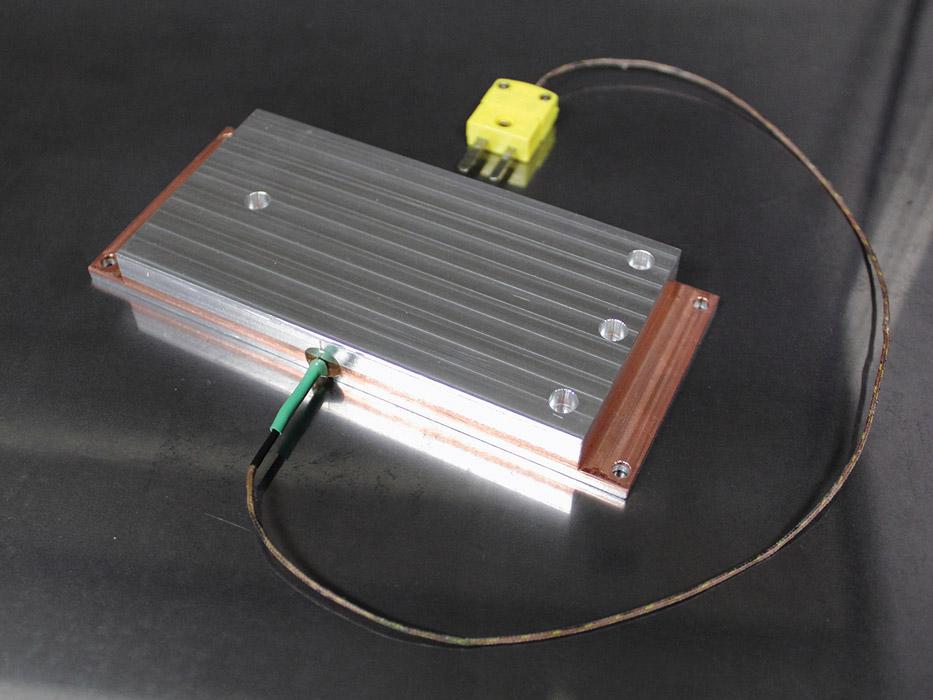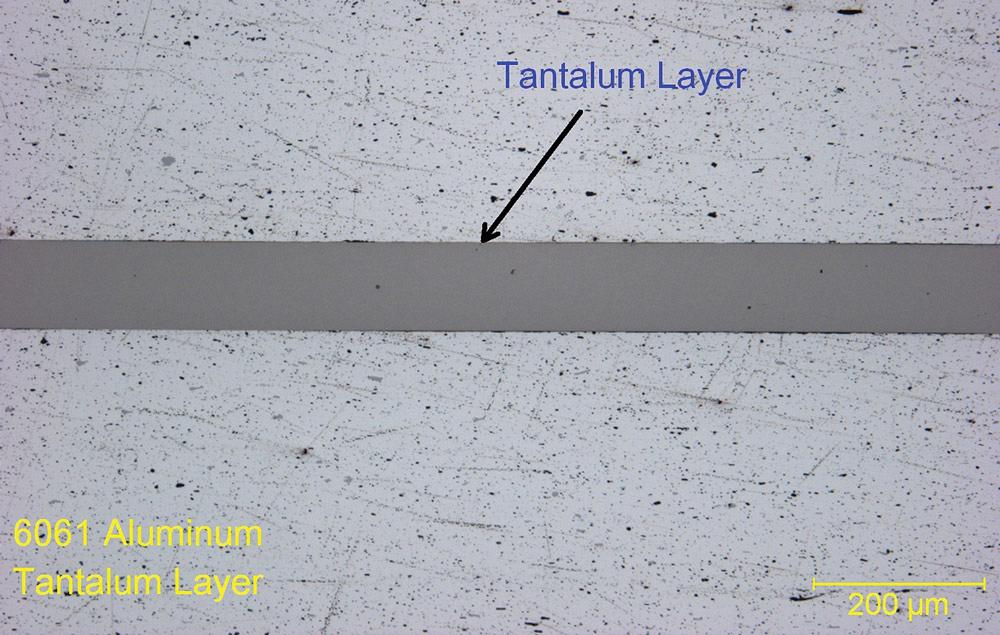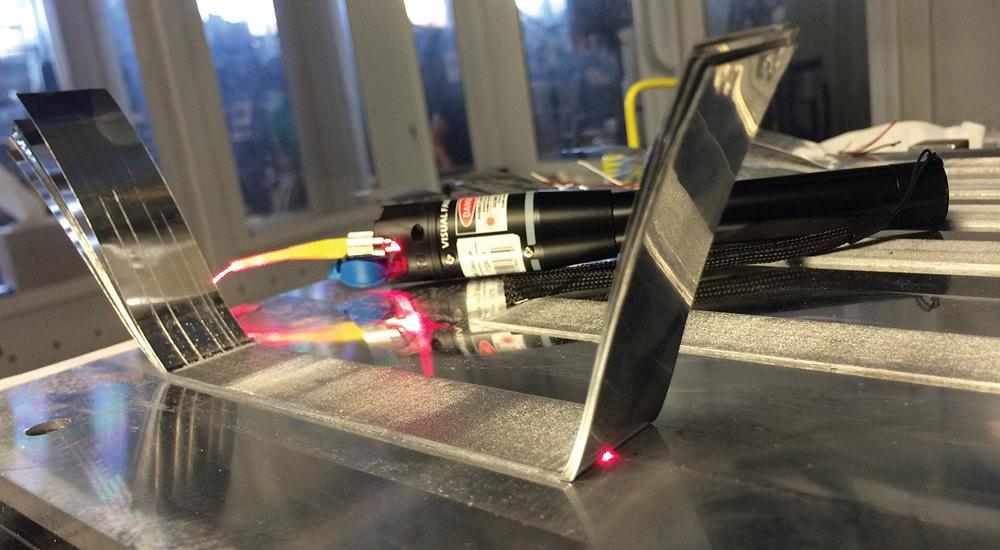CEO
- FMA
- The Fabricator
- FABTECH
- Canadian Metalworking
Categories
- Additive Manufacturing
- Aluminum Welding
- Arc Welding
- Assembly and Joining
- Automation and Robotics
- Bending and Forming
- Consumables
- Cutting and Weld Prep
- Electric Vehicles
- En Español
- Finishing
- Hydroforming
- Laser Cutting
- Laser Welding
- Machining
- Manufacturing Software
- Materials Handling
- Metals/Materials
- Oxyfuel Cutting
- Plasma Cutting
- Power Tools
- Punching and Other Holemaking
- Roll Forming
- Safety
- Sawing
- Shearing
- Shop Management
- Testing and Measuring
- Tube and Pipe Fabrication
- Tube and Pipe Production
- Waterjet Cutting
Industry Directory
Webcasts
Podcasts
FAB 40
Advertise
Subscribe
Account Login
Search
Ultrasonic welding and machining come together to take 3-D printing to the next level
This could mean the end of single-function part design
- By Mark Norfolk
- January 25, 2017
- Article
- Shop Management

Figure 1
Ultrasonic additive manufacturing was used to create this heat exchanger, which is made of aluminum and copper. In addition to managing heat, the part is designed to carry structural loading. Copper is added in specific locations to help spread heat, while aluminum is used everywhere else to keep weight low.
Metal 3-D printing is a quickly evolving market. In the last few years, the industry has seen the first round of production parts that are driven by economics, instead of industry hype.
For most of these metal 3-D printed parts, the economic driver has been part count reduction. Metal 3-D printing’s biggest selling point is design freedom: The part can be made in any shape the designer chooses. This capability allows very complex, multipart assemblies to be reduced to a single part. The quintessential example of this is the GE Aviation fuel nozzle, in which 20 legacy components were integrated into a single 3-D printed part.
Cost drivers make designers seek out part count reduction, the low-hanging fruit for the modern manufacturing company. Designs that focus on part count reduction allow for:
- A reduction in joining steps. Instead of welding, brazing, and threading myriad small parts, all of the joints are integral to the print job.
- A reduction in touch labor. By reducing part count to just one, manufacturers can eliminate work-in-progress, reduce inspections, and eliminate moving all the subcomponents around the factory.
- An increase in first-pass yield. For a component with numerous parts, the first-pass yield depends on the quality of all the incoming parts. When the part count is reduced to one, the first-pass yield increases dramatically.
Given the benefits part reduction represents, the 3-D printing industry will be focusing on it for many years. However, what is the next big leap that 3-D printing can enable?
The Next Step in Metal 3-D Part Design
The next evolution is the fabrication of multifunctional parts. What part reduction is at the assembly level, multifunctional parts is to the system level. In a traditional system, components perform a single function, such as carrying structural load, thermal management, sensing, and control. The astute designer can use metal 3-D printing not only to reduce part count, but also to design a single part that performs numerous functions in the system.
Multifunctional part design enables:
- Reduced weight. The No. 1 design requirement in the aerospace field is weight reduction. If functions are combined into one component, the material efficiency goes up and weight comes down.
- Reduced system complexity. By reducing the number of subsystems, the manufacturer no longer needs to integrate all of the subsystems with wiring, hosing, and mechanical fasteners.
- Increased reliability. If the overall system reliability is the stacked reliability of each subsystem, reducing the overall subsystem count should increase overall reliability.
A new metal 3-D printing process promises to enable multifunctional parts.
Ultrasonic additive manufacturing (UAM) is a hybrid technique based on the ultrasonic welding of metal foils and CNC contour milling. High-frequency (typically 20,000 hertz) ultrasonic vibrations are locally applied to metal foil materials and held together under pressure to create a solid-state weld. CNC contour milling is then used to create the required shape for the given layer.
Successive layers typically from 0.002 to 0.008 inch are welded together to build up height. This process is then repeated until a solid component has been created. The solid-state nature of the process allows welding of dissimilar metals without forming intermetallics common in fusion-based welding processes (see Figure 1).
By combining additive and subtractive process capabilities, UAM enables the creation of hollow, latticed, and honeycombed internal structures; deep slots; and other complex geometrics that are impossible to replicate with conventional subtractive manufacturing processes. Additionally, the solid-state nature of the UAM bond allows for incorporation of all manner of wires, fibers, and sensors into a metallic substrate. Since the metals do not have to be heated for bonding, many electronics can be embedded without damage. This enables sensors, communication circuits, and actuators to be embedded into fully dense metallic structures.
UAM is already being used for printing multifunctional parts. The process has been used to print complex heat exchangers that combine structural loading, thermal management, and advanced sensing into a single component. However, the promise of UAM is much wider. As an example, let’s examine the possibility of printing a CubeSat.

Figure 2
This micrograph shows a thin layer of tantalum embedded in an aluminum structure for radiation shielding. With UAM, dissimilar metals can be printed anywhere in the structure for radiation hardening or for selective strengthening.
Graduate students at Stanford University and California Polytechnic State University developed the CubeSat concept in the late ’90s as a way to facilitate the cost-effective design, build, test, and launch of a spacecraft. Today CubeSats are used across many sectors for communications, research, education, technology demonstration, military, and other purposes.
CubeSats have a standard base size of 10 by 10 by 10 cm, translating into an effective useful volume of 1 liter. This leaves little room for multiple separate subsystems. As such, the cube has only so much space for basic passive cooling. Also, whereas larger satellites often drive sensors with fairly high-power electronics, CubeSats possess no way to reject the high thermal loads created by electronics. As a result, they are often forced to cycle off electronics during most of the day.
UAM can be used to design a CubeSat chassis that is a single 3-D printed part performing numerous separate functions:
- Thermal. Typical CubeSat design uses passive cooling such as radiator fins to remove waste heat from onboard electronics and solar heat gain. With 3-D printing, the entire outside frame of the CubeSat can be embedded with internal channels, allowing it to function as both a structural member and heat exchanger. Such structures have already been demonstrated in aerospace aluminums with hermeticity and high burst pressures. In addition, with UAM, copper layers can be interwoven to increase thermal conductivity in specific locations.
- Radiation shielding. While typical CubeSat structures are primarily aluminum, delicate electronic passages must be further shielded from radiation with a secondary structure made of denser metals. With UAM’s solid-state welding, dense shielding alloys such as tantalum can be printed directly into the CubeSat structure, reducing weight and volume (see Figure 2).
- Sensing. The solid-state nature of UAM is unique in that it allows sensitive sensors, such as thermocouples and strain gauges, to be placed safely inside of metallic structures. To date, structures have been printed with thermocouples, foil-based strain gauges, and fiber Bragg grating for strain measurement (see Figure 3). UAM allows for the entire chassis to become an active sensing element.
The singular capabilities of ultrasonic additive manufacturing empower manufacturers with the ability to change the way they approach designing and developing parts and components. CubeSats with integrated thermal management, lightweight radiation shielding, embedded sensors, and high strength-to-weight ratio are just one example of the technology’s impact.
UAM makes it possible for manufacturers across all industries to make their innovative ideas a reality.

Figure 3
Fiber-optic Bragg grating embedded in an aluminum matrix is shown. The UAM process is able to join dissimilar metals at low temperatures, allowing a part designer to embed most electronics without any damage. Having a sensor embedded inside a metal structure allows for health monitoring and reduced part weight.
About the Author
subscribe now

The Fabricator is North America's leading magazine for the metal forming and fabricating industry. The magazine delivers the news, technical articles, and case histories that enable fabricators to do their jobs more efficiently. The Fabricator has served the industry since 1970.
start your free subscription- Stay connected from anywhere

Easily access valuable industry resources now with full access to the digital edition of The Fabricator.

Easily access valuable industry resources now with full access to the digital edition of The Welder.

Easily access valuable industry resources now with full access to the digital edition of The Tube and Pipe Journal.
- Podcasting
- Podcast:
- The Fabricator Podcast
- Published:
- 04/16/2024
- Running Time:
- 63:29
In this episode of The Fabricator Podcast, Caleb Chamberlain, co-founder and CEO of OSH Cut, discusses his company’s...
- Industry Events
16th Annual Safety Conference
- April 30 - May 1, 2024
- Elgin,
Pipe and Tube Conference
- May 21 - 22, 2024
- Omaha, NE
World-Class Roll Forming Workshop
- June 5 - 6, 2024
- Louisville, KY
Advanced Laser Application Workshop
- June 25 - 27, 2024
- Novi, MI































